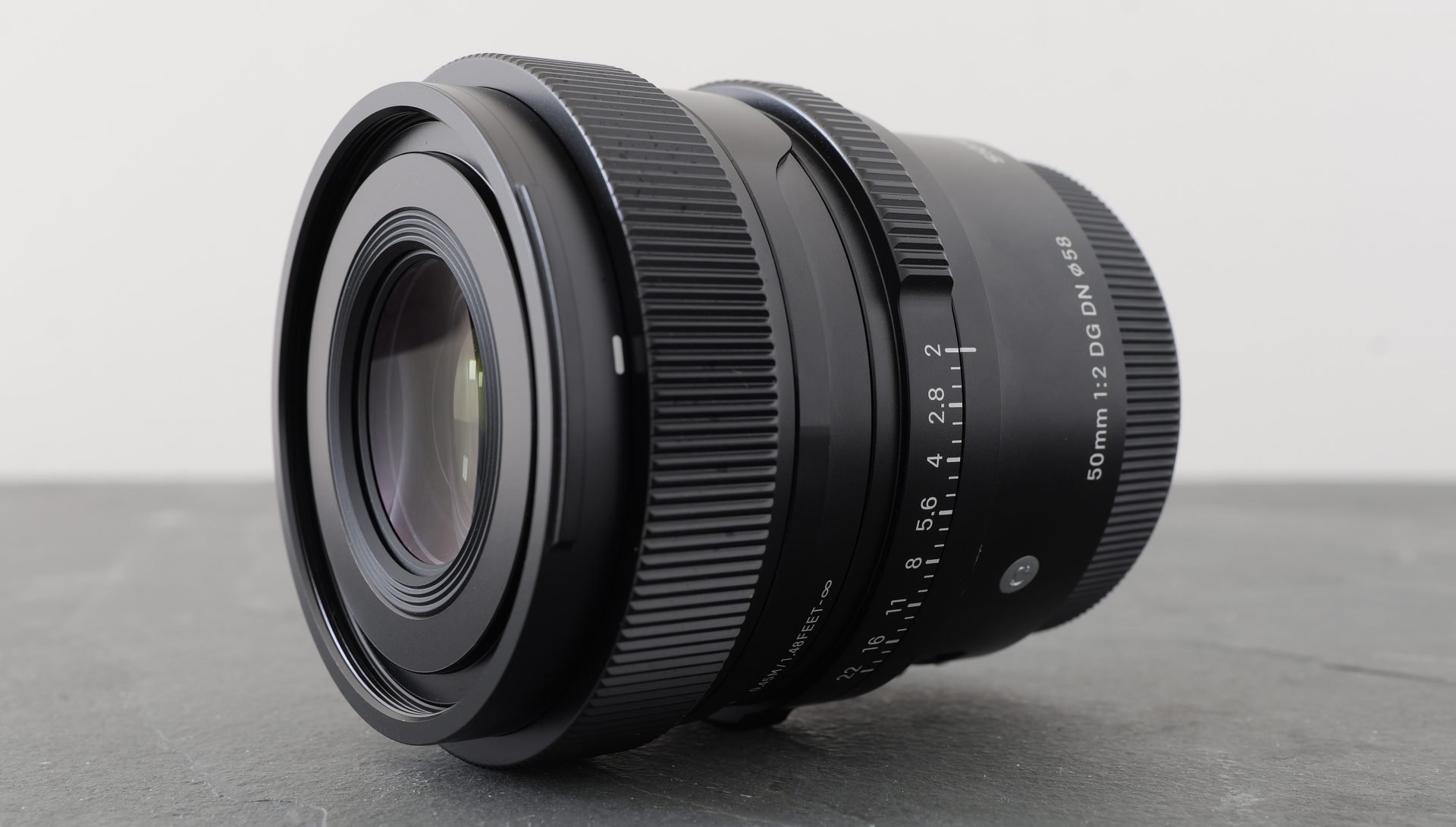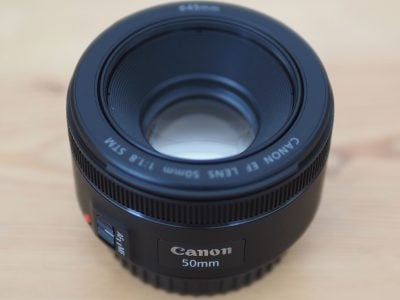Sigma 50mm f2 DG DN review
-
-
Written by Gordon Laing
Intro
The Sigma 50mm f2 DG DN is a standard prime lens for full-frame mirrorless cameras. Announced in April 2023, it’s initially available in Sony-e or Leica L-mounts, and Sigma loaned me a sample to try out.
The 50mm f2 DG DN joins Sigma’s ever-expanding Contemporary I series of compact and affordable full-frame mirrorless lenses, now with nine primes to choose from between 17 and 90mm.
The new 50 slots between the existing 45 and 65 models, delivering so-called standard coverage, ideal for general-purpose use. We’re not short of 50s, including Sigma’s recent high-end 1.4 Art version, so let’s see how this one measures-up. As always, my complete review is in the video below, but if you prefer to read the written highlights, keep scrolling!
Like other models in the I series, the 50mm is fairly compact, measuring 70mm in diameter, 68mm in length and weighing 350g. This makes it comfortably smaller and almost half the weight of the 1.4 Art.
Sigma 50mm f2 DG DN: 70x68mm, 350g // Sigma 50mm f1.4 DG DN Art: 78x110mm, 670g
The f2 version also shares the same styling as other I series models, with a metal body, ribbed control rings, and weather-sealing at the mount, albeit not throughout the entire barrel. My test sample was made in Japan.
Working outwards from the lens mount is a switch for auto or manual focus, followed by an aperture ring from f2 to f22 in one third increments with an A position for body based control; note, unlike the 1.4 Art version, this is not de-clickable. Then towards the end of the barrel is a well-damped manual focusing ring and a 58mm filter thread.
Like other I series lenses, Sigma supplies the 50 with a choice of two lens caps, one a traditional spring-loaded plastic cap, and the other a small metal disc held in place by magnets. The latter is a fun alternative which snaps into place quite satisfyingly, but I mostly used the plastic cap, which is also easier to fit or remove when the supplied cylindrical aluminium hood is fitted. Speaking of which, here’s how that looks.
The lens employs internal focusing with a stepper motor and you’re watching it right now wide-open at f2 on a Sony A7 IV set to Single AF and at very close range. Like most Sigma lenses I’ve tested on Sony bodies, there’s often a little wobble to confirm the focus in Single AFS mode, but the result is confident.
And again like earlier models I’ve tested, switching to Continuous AFC mode eliminates the wobbles with a slightly faster and more decisive focus-pull that lands straight on the target.
Here’s the same test, but for video, filming 4k 25p with a single AF area again in the middle of the frame, and with the lens open to f2. As you can see, the lens and camera combination can deliver smooth and confident focus-pulls while filming video, and this test also illustrates the kind of shallow depth-of-field effects and focus breathing in a real-life scenario.
Next for face tracking, again with the lens wide-open at f2 but this time using the full AF area. Here you can see the lens and camera easily refocusing on me as I move around the frame.
Let’s keep the f2 lens on the left and compare it to the recent 1.4 Art version on the right, where you can see its shallower depth of field. But while there’s obviously less blurring from the f2 model, there’s still plenty of background blur, and it’s clear how this kind of lens can still be used to make good-looking portraits or video presentations to camera.
Next for focus breathing with the lens set to f22 and manually focusing from infinity to the closest distance of 45cm and back again. As I focus the lens closer, you’ll see the field of view reduce, as if I was zooming into a longer focal length. Remember this is the full focusing range you’re seeing though, which you’re unlikely to do in practice, so refer back to my bottle and face focus tests for more of a real-life example.
Ok, now for my optical tests, starting with my distant landscape scene, angled so that details run into the corners. You’re looking at the image without lens compensation here, and now with Distortion Compensation set to Auto where you can see the profile only having to make very minor corrections to the geometry with a very mild crop as a result.
Since the lens is designed to be used with a profile, all the images I’ll show you from this point on have it applied.
I’m now going to switch to some tests I made later in the day when I was able to shoot at f2 without overexposing. So here’s the view with the Sigma 50mm f2 DG DN, wide-open at f2 and focused in the middle of the frame.
Taking a closer look in the centre reveals very crisp details, which I’d be happy with, but closing the aperture one stop to f2.8 brings minor improvements to overall sharpness. Closing any further makes no difference to the focused detail.
Returning to the f2 sample and moving out into the far corner shows the details becoming a little softer and some darkening due to vignetting. As I gradually close the aperture, this improves until the field is uniformly sharp at around f5.6 to f8.
Moving on, 50mm lenses are a popular choice for close-range portraits or smaller group shots, and while f2 won’t deliver the blurring of models with brighter apertures, this Sigma still provides some decent separation from the background without obliterating it.
Here, the rendering in the background looks well-behaved without any distracting busy-ness, and if you zoom-in for a closer look, there’s plenty of fine details on my face.
Here’s the full view again at f2, before switching to a version taken at f2.8 for those who want more of their subject to be sharp, albeit at the cost of a more defined background.
Next for my bokeh ball test, here with the 50mm f2 focused close to its minimum distance of 45cm, and with the aperture wide-open. The fairy lights behind the ornament have been rendered into attractive-looking blobs, and while not immune to some elongation in the corners, they are mostly uniform.
Taking a closer look also reveals minimal outlining or textures within the blobs, two give-aways of a lesser lens in this regard, so on the whole, a good result.
As I close the aperture down, you’ll see the blobs become smaller and more uniform, reflecting the shape of the nine-bladed aperture system.
Now let’s briefly compare the 50 f2 on the left against the 1.4 Art on the right, both set to their maximum apertures. Sure they’re taken from slightly different angles, but the distances are similar and you can see the difference between the two lenses for rendering and depth of field.
Sticking with closeups, Sigma quotes a minimum focusing distance of 45cm for both the f2 and the earlier 1.4 Art lenses, and you’re looking at a ruler photographed with the f2 model as close as I could manually focus it.
Here’s it’s reproducing 210mm across the width of the frame. Note I managed 192mm with the 1.4 Art lens, but that doesn’t make a huge difference and neither lens is particularly ideal for macro close-ups.
Check prices on the Sigma 50mm f2 DG DN at B&H, Adorama, WEX UK or Calumet.de. Alternatively get yourself a copy of my In Camera book, an official Cameralabs T-shirt or mug, or treat me to a coffee! Thanks!
 The Sigma 50mm f2 DG DN stands-out in a crowded market of standard lenses by delivering a step-up from entry-level models without the cost or weight of premium options. It’s pretty light and compact, but well-built, focuses quickly and delivers crisp subjects against nicely-rendered backgrounds. If you’re after corner-to-corner sharpness, you will need to close down to around f5.6, and of course an f2 lens will never match a brighter model for potential blurring at the same distance. But both are design decisions to meet a size, weight and price point in the Contemporary I series. The biggest issue facing the lens is the wealth of alternatives available, including Sigma’s own 50 1.4 DG DN Art, giving you a well-corrected brighter option at around $850, but it is larger and almost double the weight. There really is a 50 for everyone, but I feel Sigma’s doing a great job at identifying and plugging any gaps in price and spec, and now has two great standard primes for full-frame mirrorless owners. If you like their style, the only real question is $640 for the compact f2 or $850 for the heftier 1.4 Art? Both are easy to recommend.
The Sigma 50mm f2 DG DN stands-out in a crowded market of standard lenses by delivering a step-up from entry-level models without the cost or weight of premium options. It’s pretty light and compact, but well-built, focuses quickly and delivers crisp subjects against nicely-rendered backgrounds. If you’re after corner-to-corner sharpness, you will need to close down to around f5.6, and of course an f2 lens will never match a brighter model for potential blurring at the same distance. But both are design decisions to meet a size, weight and price point in the Contemporary I series. The biggest issue facing the lens is the wealth of alternatives available, including Sigma’s own 50 1.4 DG DN Art, giving you a well-corrected brighter option at around $850, but it is larger and almost double the weight. There really is a 50 for everyone, but I feel Sigma’s doing a great job at identifying and plugging any gaps in price and spec, and now has two great standard primes for full-frame mirrorless owners. If you like their style, the only real question is $640 for the compact f2 or $850 for the heftier 1.4 Art? Both are easy to recommend.



